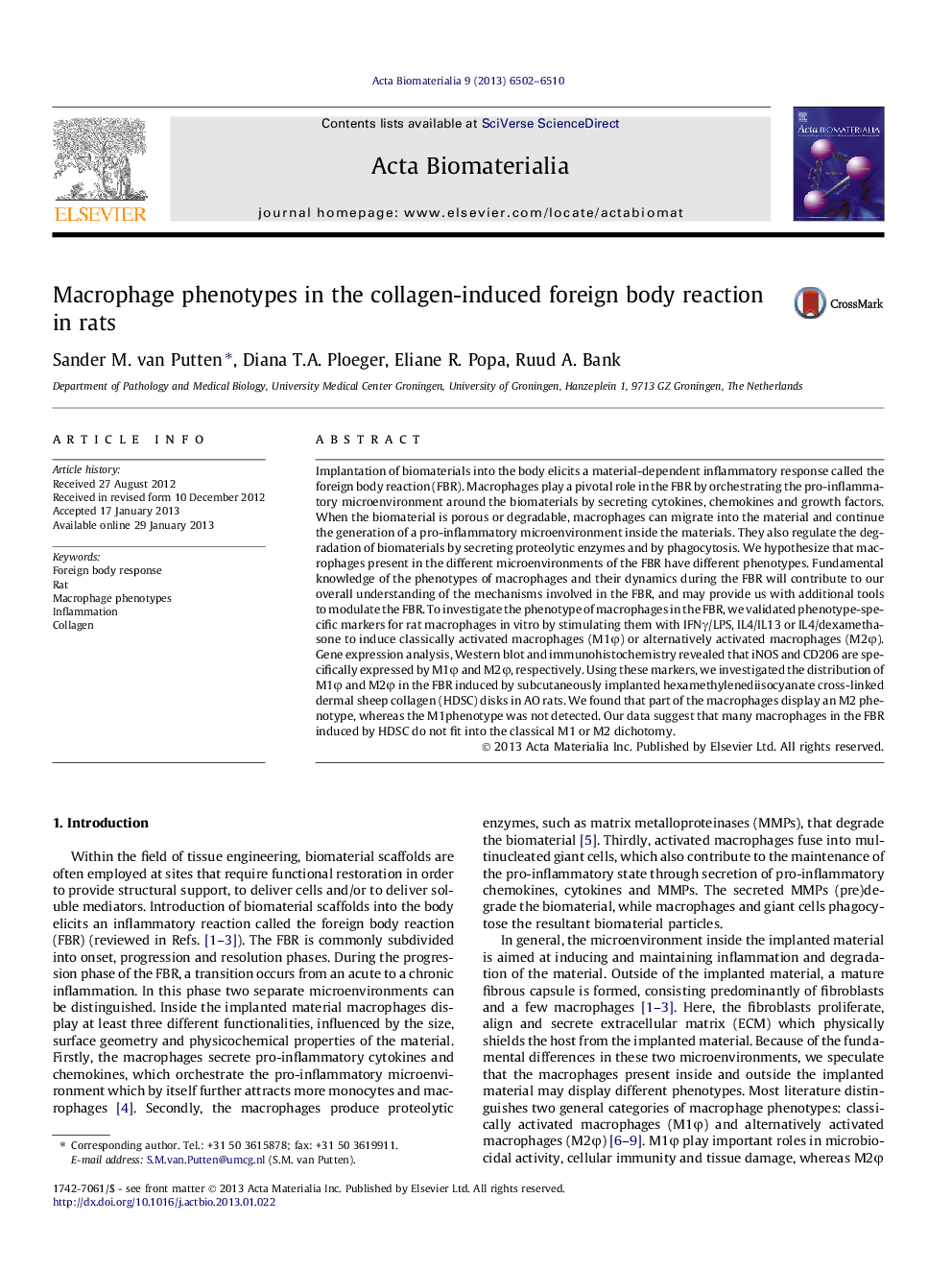| Article ID | Journal | Published Year | Pages | File Type |
|---|---|---|---|---|
| 10159918 | Acta Biomaterialia | 2013 | 9 Pages |
Abstract
Implantation of biomaterials into the body elicits a material-dependent inflammatory response called the foreign body reaction (FBR). Macrophages play a pivotal role in the FBR by orchestrating the pro-inflammatory microenvironment around the biomaterials by secreting cytokines, chemokines and growth factors. When the biomaterial is porous or degradable, macrophages can migrate into the material and continue the generation of a pro-inflammatory microenvironment inside the materials. They also regulate the degradation of biomaterials by secreting proteolytic enzymes and by phagocytosis. We hypothesize that macrophages present in the different microenvironments of the FBR have different phenotypes. Fundamental knowledge of the phenotypes of macrophages and their dynamics during the FBR will contribute to our overall understanding of the mechanisms involved in the FBR, and may provide us with additional tools to modulate the FBR. To investigate the phenotype of macrophages in the FBR, we validated phenotype-specific markers for rat macrophages in vitro by stimulating them with IFNγ/LPS, IL4/IL13 or IL4/dexamethasone to induce classically activated macrophages (M1Ï) or alternatively activated macrophages (M2Ï). Gene expression analysis, Western blot and immunohistochemistry revealed that iNOS and CD206 are specifically expressed by M1Ï and M2Ï, respectively. Using these markers, we investigated the distribution of M1Ï and M2Ï in the FBR induced by subcutaneously implanted hexamethylenediisocyanate cross-linked dermal sheep collagen (HDSC) disks in AO rats. We found that part of the macrophages display an M2 phenotype, whereas the M1phenotype was not detected. Our data suggest that many macrophages in the FBR induced by HDSC do not fit into the classical M1 or M2 dichotomy.
Related Topics
Physical Sciences and Engineering
Chemical Engineering
Bioengineering
Authors
Sander M. van Putten, Diana T.A. Ploeger, Eliane R. Popa, Ruud A. Bank,
